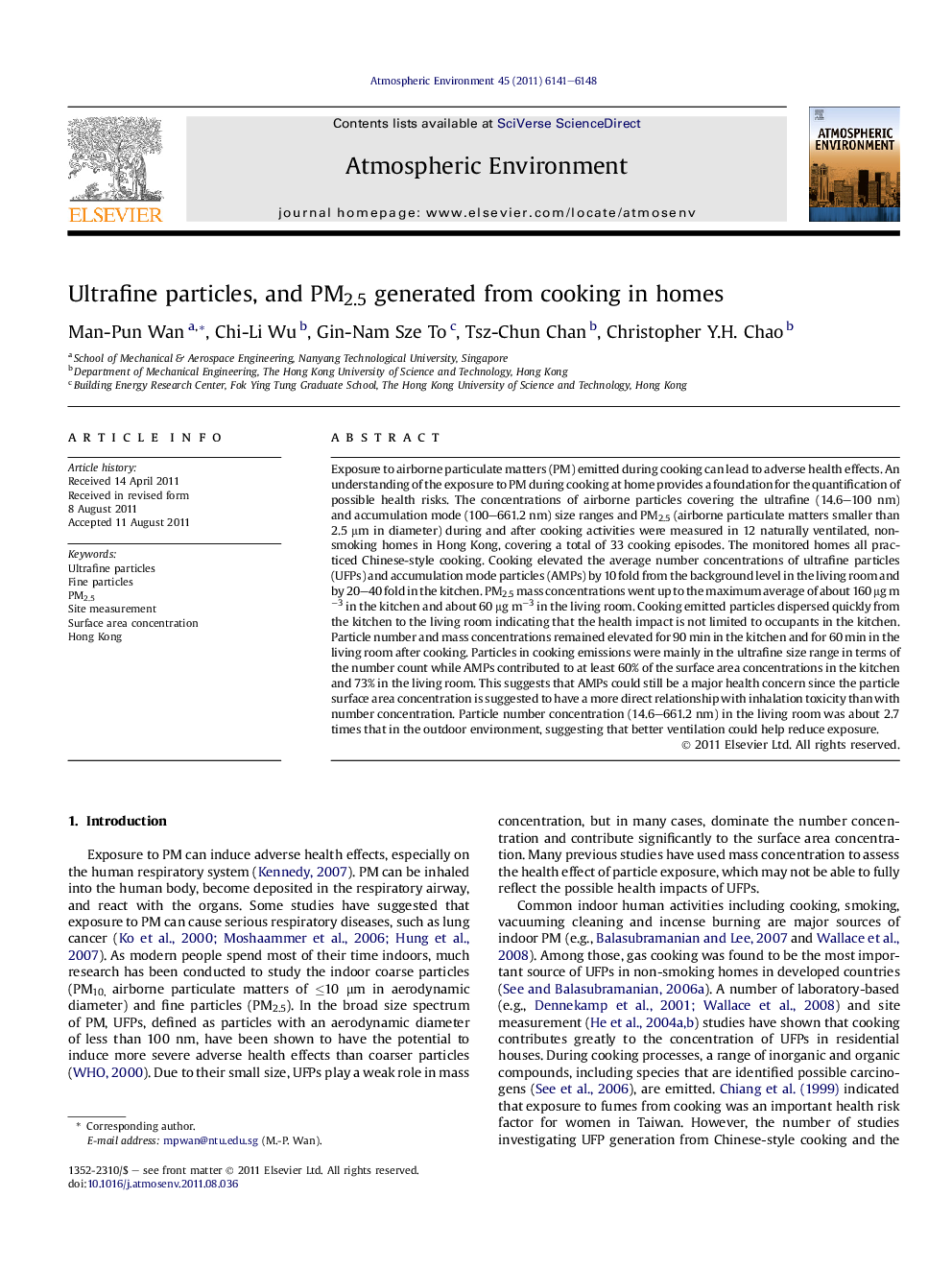| کد مقاله | کد نشریه | سال انتشار | مقاله انگلیسی | نسخه تمام متن |
|---|---|---|---|---|
| 4439356 | 1311016 | 2011 | 8 صفحه PDF | دانلود رایگان |

Exposure to airborne particulate matters (PM) emitted during cooking can lead to adverse health effects. An understanding of the exposure to PM during cooking at home provides a foundation for the quantification of possible health risks. The concentrations of airborne particles covering the ultrafine (14.6–100 nm) and accumulation mode (100–661.2 nm) size ranges and PM2.5 (airborne particulate matters smaller than 2.5 μm in diameter) during and after cooking activities were measured in 12 naturally ventilated, non-smoking homes in Hong Kong, covering a total of 33 cooking episodes. The monitored homes all practiced Chinese-style cooking. Cooking elevated the average number concentrations of ultrafine particles (UFPs) and accumulation mode particles (AMPs) by 10 fold from the background level in the living room and by 20–40 fold in the kitchen. PM2.5 mass concentrations went up to the maximum average of about 160 μg m−3 in the kitchen and about 60 μg m−3 in the living room. Cooking emitted particles dispersed quickly from the kitchen to the living room indicating that the health impact is not limited to occupants in the kitchen. Particle number and mass concentrations remained elevated for 90 min in the kitchen and for 60 min in the living room after cooking. Particles in cooking emissions were mainly in the ultrafine size range in terms of the number count while AMPs contributed to at least 60% of the surface area concentrations in the kitchen and 73% in the living room. This suggests that AMPs could still be a major health concern since the particle surface area concentration is suggested to have a more direct relationship with inhalation toxicity than with number concentration. Particle number concentration (14.6–661.2 nm) in the living room was about 2.7 times that in the outdoor environment, suggesting that better ventilation could help reduce exposure.
► Ultrafine particles and PM2.5 were measured in 12 homes in Hong Kong, covering a total of 33 cooking episodes.
► Cooking emitted particles can disperse quickly from the kitchen to the living room.
► Particles in cooking emissions were mainly in the ultrafine size range in terms of number.
► Accumulation mode particles are the major contributors for surface area concentration.
Journal: Atmospheric Environment - Volume 45, Issue 34, November 2011, Pages 6141–6148